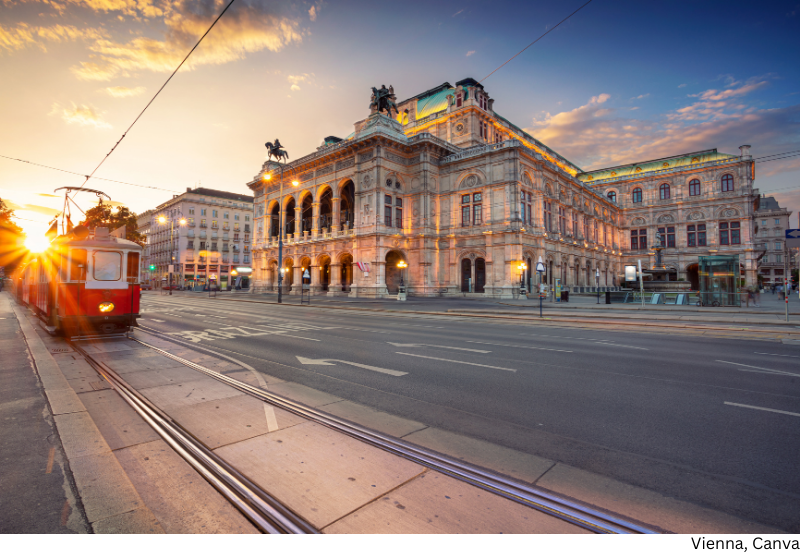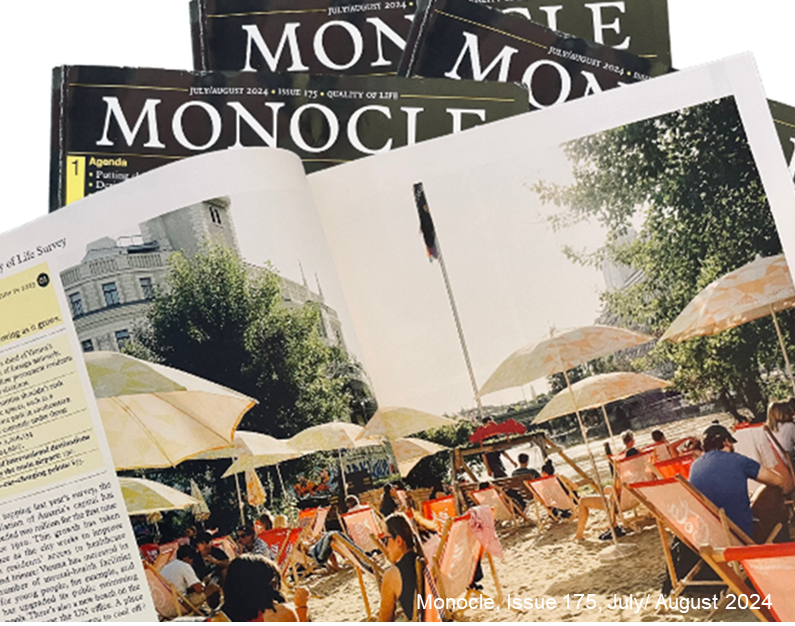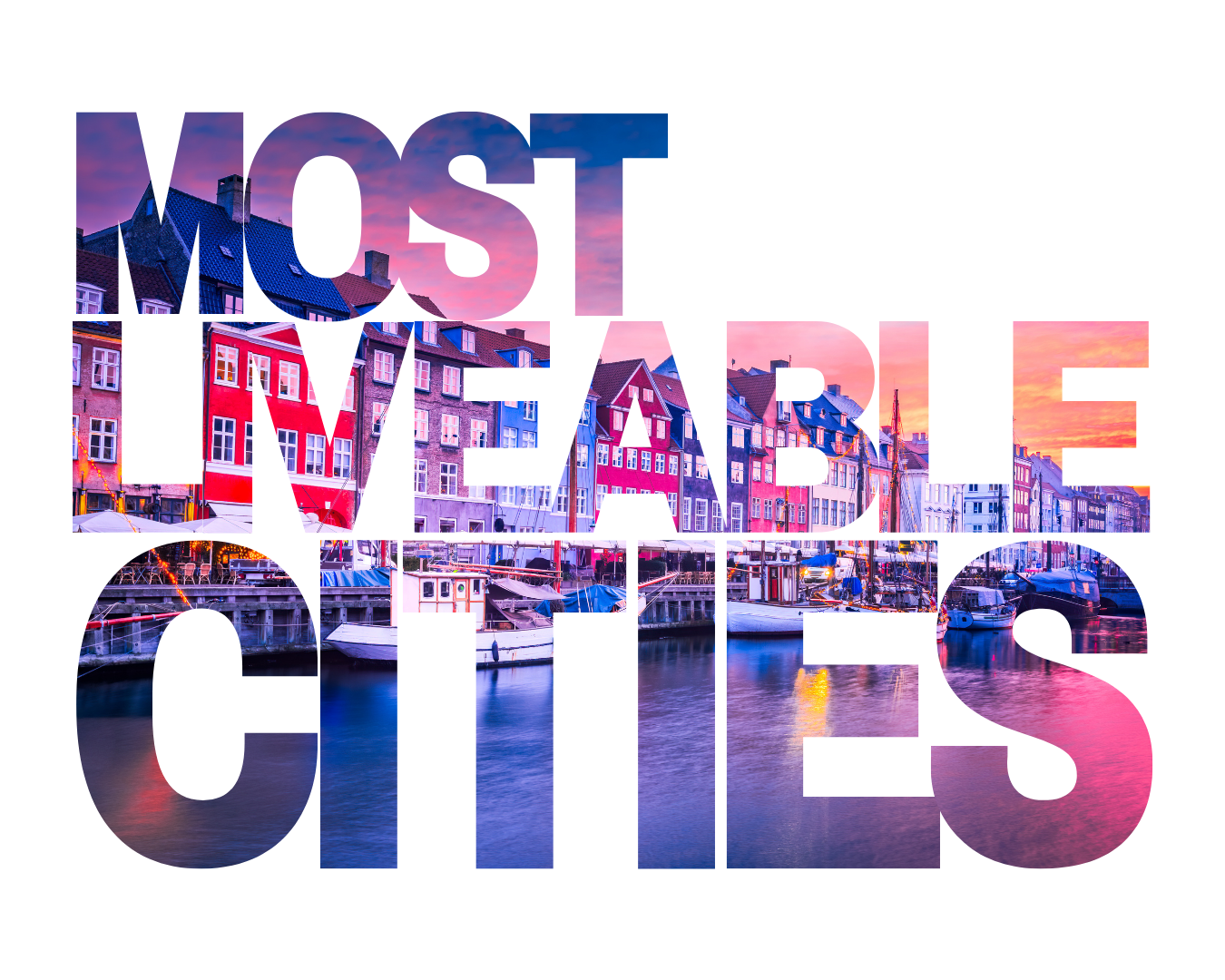For anyone considering a move to Vienna, one of the first questions is: how much does daily life actually cost? The good news? Vienna offers an impressive balance – more affordable than many Western European capitals while consistently ranking as one of the most liveable cities in the world.
How Affordable is Vienna Compared to Other Top-Ranked Cities?
We’ve analysed March 2025 data from Numbeo, a user-driven global cost-of-living database, to compare the cost of living in Vienna with other cities ranked highly by the Economic Intelligence Unit (EIU), Monocle, and Mercer (we wrote posts on the 2024 survey results for EIU and Monocle). Here’s what we found.
Top-Ranking Cities Analysed
Vienna (Austria), Swiss cities: Zurich, Bern, Geneva and Basel; Copenhagen (Denmark); Stockholm (Sweden); Amsterdam (Netherlands); German cities: Frankfurt and Munich; Paris (France); Lisbon (Portugal); Madrid (Spain); Japanese cities: Osaka and Tokyo; Auckland (New Zealand); Australian cities: Melbourne and Sydney; and Canadian cities: Calgary and Vancouver.
Supermarket Prices: How Does Vienna Stack Up?
One of the first things internationals notice when relocating is the cost of groceries. Food prices provide a useful benchmark for overall affordability, as they directly impact daily expenses.
Vienna’s Grocery Costs: Balanced and Reasonable
Vienna sits comfortably between Europe’s most expensive cities (like Zurich and Geneva) and its more budget-friendly capitals (like Lisbon and Madrid). It offers a balanced cost of living when it comes to food.
- Essential staples like milk (€1.48/litre), bread (€2.49/loaf), and eggs (€4.01/dozen) are noticeably cheaper in Vienna than in Swiss cities but cost more than in Southern Europe.
- Local cheese and meat prices in Vienna, though significantly cheaper than the Swiss cities, are on a par with Munich and Paris, but relatively more expensive than other cities: local cheese (€15.23); chicken fillets (€13.16/kg) and beef (€20.69/kg).
- Fresh produce offers savings too: a kilo of apples (€2.55) is far cheaper than most cities, such as Zurich (€4.57), Tokyo (€4.80), Paris (€3.12) and Calgary (€3.74), while potatoes (€1.77/kg) align with Amsterdam (€1.74) and Madrid’s (€1.75) pricing.
Takeaway: Vienna’s grocery prices land comfortably in the middle – reasonable and balanced.
🔎 Explore the interactive supermarket price chart: Hover over the dots to see prices for selected supermarket items for different cities.
|
|
|
|
|
|
|
|
|
|
||
Dining Out in Vienna: What’s the Cost?
Dining in Vienna offers a mix of affordability and indulgence, depending on where you eat. Compared to other cities ranked among the world’s most liveable, Vienna sits in a sweet spot: significantly cheaper than Switzerland, but pricier than Asia.
The Cost of a Meal in Vienna
Casual Dining: Expect to pay €15 for an inexpensive meal – much lower than Geneva (€31) and the other Swiss cities, and higher than Japanese cities, Tokyo and Osaka (around €6) but on a par with the other top-ranking cities (ranging from €13 to €20).
Date Night: A three-course dinner for two (mid-range restaurant) costs €73.50, placing it slap-bang in the middle of the table rankings, similar to Vancouver (€76.49), Melbourne and Sydney (both €69.68).
Fast Food Fix: A McDonald’s combo meal in Vienna costs €10, cheaper than in Switzerland (€15–€17) and Copenhagen and Amsterdam (€13), but in line with other European cities.
🔎 McDonald's Combo Meal Index: Our take on the Big Mac Index (see below for explanation), where we have compared other world's most liveable cities against the average cost of a McDonald's Combo Meal in Vienna.
What is the Big Mac Index?
 Created by The Economist, the Big Mac Index is a simple way to compare the cost of living worldwide. By tracking the price of a Big Mac in different countries, it highlights how currencies are over- or undervalued against the US dollar. Since McDonald’s meals reflect local wages, rent, and supply costs, this index offers a fun but useful snapshot of purchasing power.
Created by The Economist, the Big Mac Index is a simple way to compare the cost of living worldwide. By tracking the price of a Big Mac in different countries, it highlights how currencies are over- or undervalued against the US dollar. Since McDonald’s meals reflect local wages, rent, and supply costs, this index offers a fun but useful snapshot of purchasing power.

Drinks: A Mixed Bag
Beer Culture Lives On: Domestic beer costs €5 – more affordable than Zurich (€8.36) or Copenhagen (€8.04), but pricier than Lisbon (€3) and Madrid (€3.50).
Costly Caffeine: Vienna’s €4.21 cappuccino is among Europe’s highest, even surpassing Paris (€3.85) and Amsterdam (€4.01). But considering Vienna’s deep-rooted coffeehouse culture, perhaps it’s a price worth paying.
Bottled water: A 0.33L bottle of water will set you back €2.64 – relatively better value than the rest of Europe (other than Stockholm (€2.10), Lisbon (€1.35) and Madrid (€1.78), but more expensive than the non-European cities.
| Our top tip: tap water! Ask for "Leitungswasser" instead, or tap water in English! It is mountain fresh, sourced directly from the Austrian Alps. Some places may charge a small fee for it – but still cheaper than bottled water, and just as good, if not better! |
Takeaway: Eating out is reasonable, but coffee isn’t cheap – Vienna takes its caffeine seriously.
Transportation: A Major Cost Advantage
Public Transport: One of Vienna’s biggest affordability wins is its public transport system. A single ticket costs just €2.40, far cheaper than Zurich (€4.18), Stockholm (€3.91) or Frankfurt (€3.65). Even better value? The price of Vienna’s monthly ticket was only beaten by Lisbon, Madrid and Osaka at €40, €32 and €31.83 respectively. But the real deal? Vienna’s annual pass is only €365 – yes, just €1 per day! – for unlimited access to trams, buses, and U-Bahn (not captured in Numbeo’s data, but just one that we had to share!).
Taxis: Taxis are also reasonably priced, with a base fare of €4, and €2 per km – cheaper than most European cities but more expensive than non-European counterparts.
Cars: If you plan to drive? Gasoline prices (€1.61 per litre) and car prices are competitively positioned, compared to its European counterparts, with a new Volkswagen Golf costing around €26,000 – one of the lowest prices in Europe, but pricier than in Japan or Canada.
Takeaway: Vienna is a city built for public transport, offering exceptional value. Though we also highly recommend getting around Vienna by bike or foot – to capture all the beauty 😊.
Utilities: Reliable Infrastructure
Utility prices have been a challenge across Europe, and Vienna hasn’t been immune to price hikes, especially for gas and heating. For an 85m² apartment in Vienna, basic utilities (electricity, heating, water, and garbage) cost around €278 per month, more expensive only in Munich (€340) and Frankfurt (€330).
Mobile plans and internet costs, on the other hand, are much better value than its top-ranking counterparts. A typical monthly mobile plan with calls and 10GB+ of data costs just €15.31, as one of the cheapest offerings of cities compared, and on a par with Stockholm (€15.27), Munich (€14.34) and Paris (€15.14). Similarly, internet costs in Vienna are also one of the cheapest, averaging €35.82 for a high-speed unlimited plan – compared to Geneva (€52.59), Amsterdam (€42.13), and Melbourne (€46.61) and Calgary (€54.93).
Takeaway: While energy prices remain a topic of discussion, Vienna still offers a good balance of affordability and reliable infrastructure compared to other major cities.
Sports and Leisure: Staying Active Without Breaking the Bank
Vienna sits firmly in the middle for gym membership and tennis court rental. Gym membership (€46.42) is on a par with Copenhagen (€44.04), Munich (€47.54), Melbourne (€45.92) and Calgary (€46.22). Much cheaper than the Swiss cities, which together averaged €71.45 and Japan cities (together averaging €59.57), but considerably more expensive than Paris (€34.14) and Auckland (€31.08).
Cinema tickets in Vienna, on the other hand, offer good value (€12) – on a par with Japan’s cities (€11.74), and cheaper than all but Lisbon (€8), Madrid (€10) and Calgary (€10.84) and Vancouver (€10.20).
Takeaway: Fitness and leisure activities are reasonably priced, with gyms offering good value.
Childcare: Competitive Costs for Private Options
The range of average costs for preschool or kindergarten (full-day, private, monthly) varies from €61.80 in Osaka to €3,135 in Geneva. Vienna sits very comfortably at the lower end at €266.88, beaten only by Osaka and Stockholm (€139.44).
For international education, annual primary school tuition in Vienna averages €17,331, sitting in the mid-range between Stockholm (€ 5,637), of which no other city comes close, and Geneva (€35,496).
Takeaway: Vienna offers affordable private childcare and competitive international school fees, making it a smart choice for expat families.
Clothing and Shoes: Mid-Range Pricing
Vienna’s clothing prices align with other major European cities. Expect to pay around €96 for a pair of Levi jeans, €41 for a summer dress (high street store), €91 for a pair of Nike running shoes, and €134 for branded leather shoes. Prices are in line with other European cities, such as Munich and Amsterdam but generally more expensive than its non-European counterparts.
Takeaway: Apparel costs in Vienna are in line with other European cities.
🔎 Explore the interactive price comparison table for select apparel items: Click on the apparel items to sort by price across different cities.
Renting and Buying Property: Vienna’s Strengths
Renting an Apartment
When it comes to renting, Vienna stands out as one of the most affordable cities among the world’s most liveable. A one-bedroom apartment in the city centre averages €1,037, far below Geneva (€1,998) or Amsterdam (€2,005). Only Osaka (€645.87) is cheaper. Even outside the city centre, Vienna’s €751 average is remarkably competitive, especially compared to Paris (€1,019) or Lisbon (€1,082).
For larger spaces, Vienna continues to offer better value. A three-bedroom apartment costs an average of €2,007 in the city centre and €1,460 outside it, making family-sized housing significantly more affordable than in many other European cities.
A key reason behind Vienna’s attractive rental prices is its unique social housing model, which helps moderate overall rent levels. While most newcomers will not qualify for subsidised housing, the private rental market still offers better value than many comparable global cities.
🔎 Explore the chart: rental cost comparisons for 1-bedroom apartments
Buying Property
When it comes to buying property, Vienna sits in the mid-range – more expensive than Lisbon, Madrid, or Copenhagen but far more affordable than Paris, Munich, or the Swiss cities. The average price per square metre in the city centre is €9,659, considerably lower than Paris (€12,261) or Munich (€11,658). Outside the centre, property costs €5,997 per square metre, significantly under Geneva (€13,957) or Amsterdam (€6,765).
While there are regulations for non-EU buyers, Austria’s property market remains a stable, long-term investment.
Takeaway: Vienna offers exceptional rental affordability for a top-tier city, with real estate prices that remain competitive in the European market.
🔎 Explore the interactive property prices by cities: price per square metre (in and outside city centre): Click on the "Price per Square Meter to Buy" to sort by price across different cities.
Summary: The Vienna Advantage
Vienna strikes a fantastic balance between affordability and quality of life.
For those considering a move, Vienna delivers great value – without compromising on liveability. If you’re looking for an affordable European capital with world-class infrastructure, Vienna might just be the perfect fit.
Additional information:
For informational purposes only: This cost-of-living analysis is for informational purposes only. Actual costs may vary based on individual circumstances, exchange rates, inflation, and lifestyle preferences. Please consult additional sources for more accurate and personalised information.
Table of Numbeo data for this blog post can be found here.




